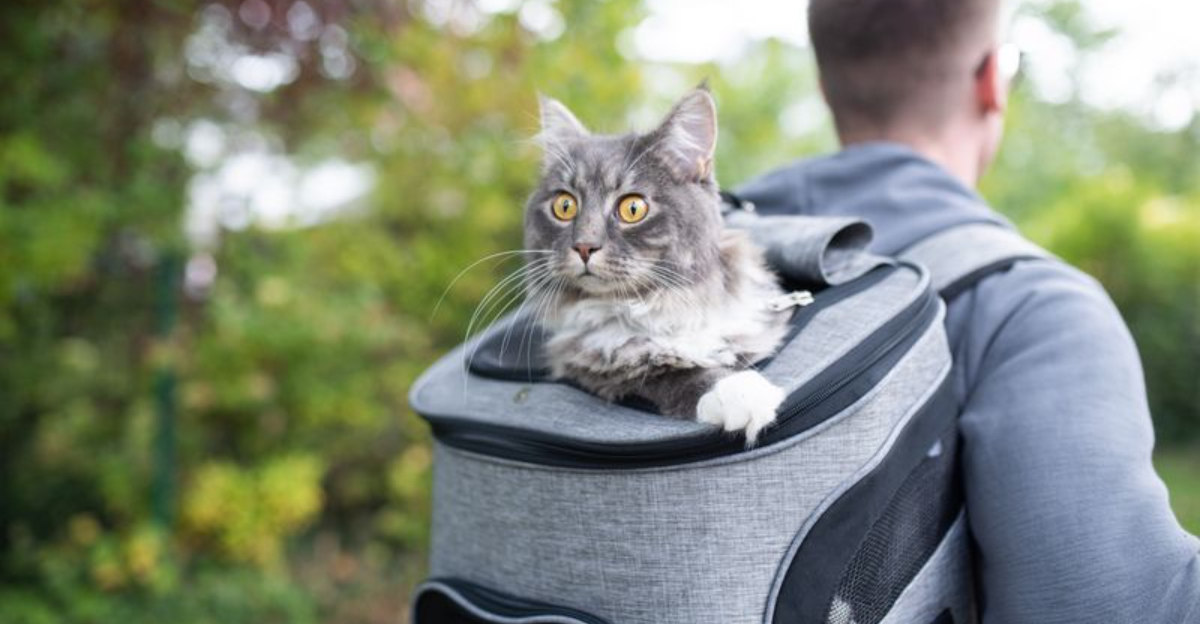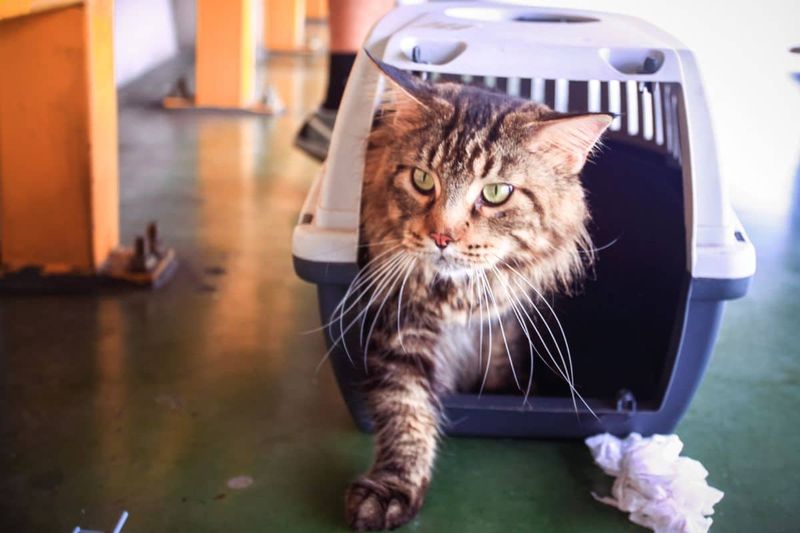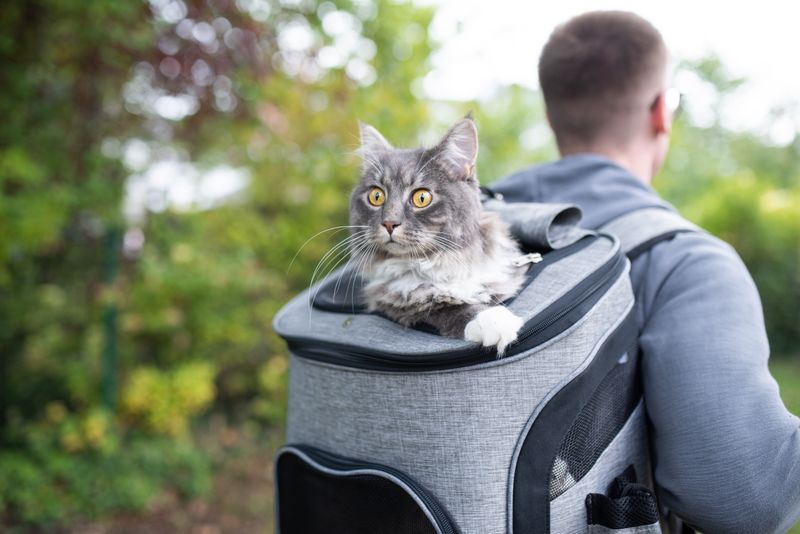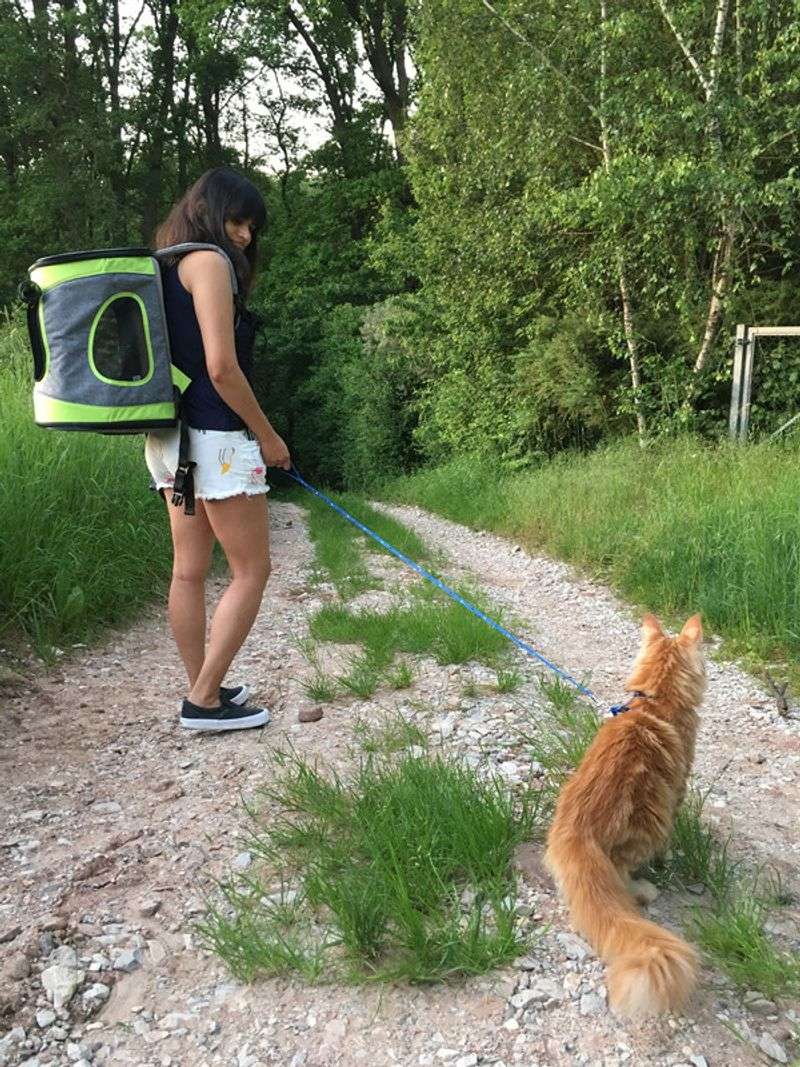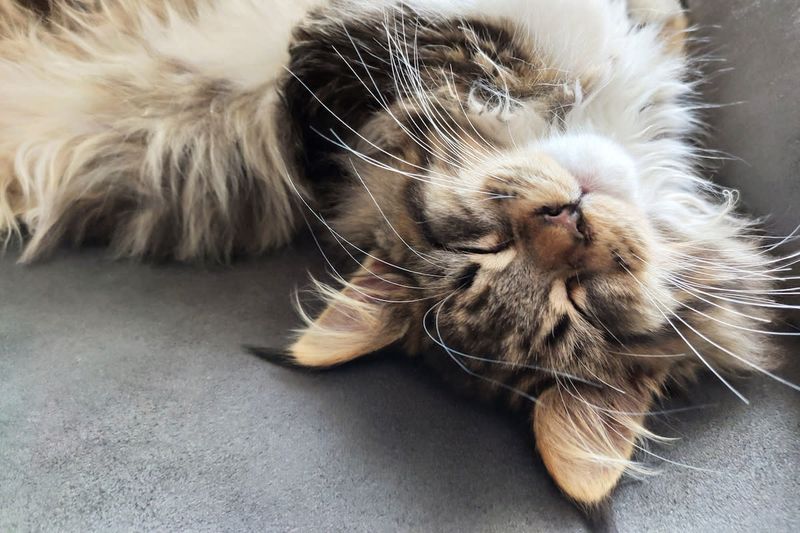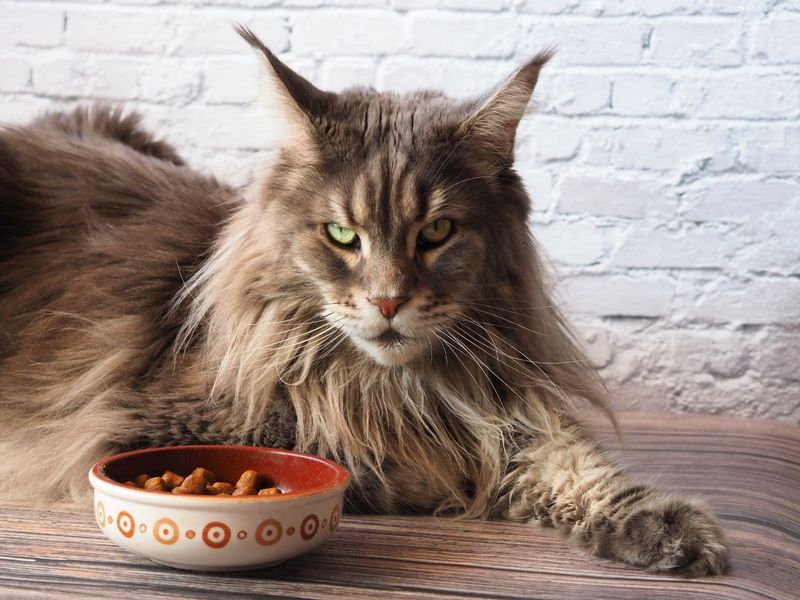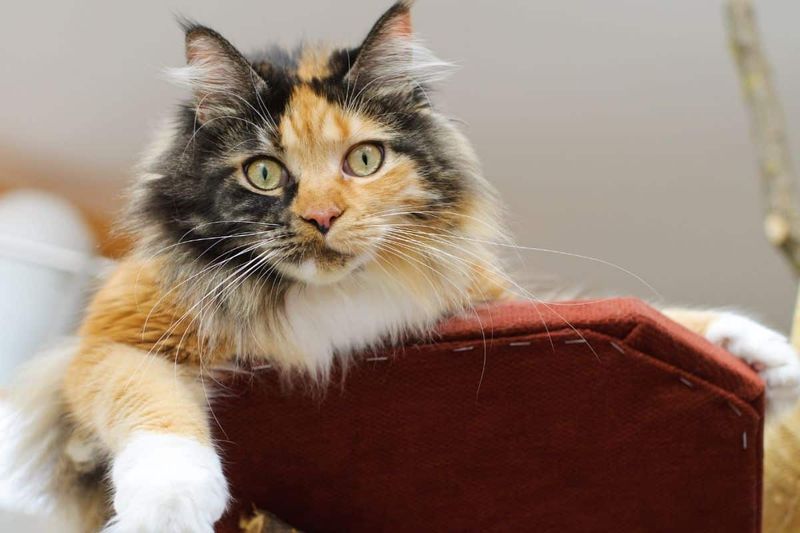📖 Table of Content:
- 1. Get Them Used to the Carrier Early
- 2. Choose the Right Carrier
- 3. Create a Cozy Environment
- 4. Practice Short Trips First
- 5. Use Calming Aids (If Needed)
- 6. Keep Feeding Time Thoughtful
- 7. Pack Their Essentials
- 8. Maintain a Calm Atmosphere
- 9. Never Leave Them Unattended
- 10. Give Them Time to Adjust After Arrival
Known for their majestic size, sociable nature, and keen intelligence, Maine Coons often behave more like dogs than cats, which can make them adaptable companions on the road—if the experience is handled thoughtfully. Unlike many other cats, Maine Coons are curious explorers, but their sensitivity to change means a poorly planned trip can quickly lead to anxiety and discomfort for both pet and owner.
Successfully navigating a trip with a Maine Coon takes more than simply stuffing them into a carrier and hitting the road. From the size of their carrier to the tone of your voice, every little detail plays a part in shaping their emotional comfort during travel. Whether you’re planning a short drive to the vet or a cross-country adventure, preparation, patience, and understanding are your best tools in making the journey stress-free.
This guide offers ten practical, loving tips that reflect not only the logistical side of feline travel, but also the emotional care your Maine Coon deserves. Each tip is tailored to their unique temperament, helping you anticipate their needs and foster a positive experience. When travel is done right, your Maine Coon may surprise you with just how resilient—and adventurous—they can be.
1. Get Them Used to the Carrier Early
Familiarity breeds comfort, especially for Maine Coons who thrive on trust and routine. Begin by placing the carrier in a quiet area of your home weeks before travel, leaving the door open so your cat can explore it on their own terms. Reward voluntary entry with treats or gentle praise to associate the space with positive experiences. You might even place a favorite toy or blanket inside to spark curiosity and create a sense of ownership. As days go by, allow your cat to nap or eat near the carrier to reduce any sense of threat. Don’t rush the process—let your Maine Coon set the pace, reinforcing their natural desire to explore without pressure. Over time, the carrier transforms from a source of anxiety into a mobile version of their safe space.
2. Choose the Right Carrier
Size matters when it comes to choosing a carrier for a Maine Coon, one of the largest domestic cat breeds. Select a carrier that offers enough room for your cat to turn around, stretch, and lie comfortably without being cramped. Hard-sided models with top-loading features are often best, making it easier to lift them in and out gently. Ventilation should be generous on multiple sides to keep fresh air flowing and to allow visibility—Maine Coons are observant and may feel calmer when they can see you. Ensure the latches and zippers are secure, as these strong, clever cats can sometimes nudge their way out. Test the carrier ahead of time by taking your cat on brief outings around the house or in the car. A thoughtfully chosen carrier can become a safe, familiar retreat rather than a confining trap.
3. Create a Cozy Environment
Comfort is essential for reducing stress, and your Maine Coon’s sense of security often lies in familiar textures and scents. Line the bottom of the carrier with a soft blanket or piece of your clothing to surround them with smells they recognize. Avoid strong detergents or unfamiliar bedding that may feel alien or chemically harsh to their sensitive nose. Keep a favorite plush toy or chew-safe item close by to give them something to nuzzle or paw at. Temperature also plays a role—make sure the space isn’t too warm or too cold, particularly for long trips. Close windows slightly to avoid direct drafts while maintaining airflow. This cozy setup tells your cat, “You’re safe here,” without needing a single word.
4. Practice Short Trips First
Gradual exposure is a powerful way to desensitize your Maine Coon to the unfamiliar sensations of travel. Start with simple trips around the block in your car to get them used to the movement, engine noise, and changes in scenery. These brief outings help eliminate the association between carriers and unpleasant destinations like the vet. Build up the duration over time while monitoring your cat’s body language for signs of tension or curiosity. Stay calm and avoid erratic driving—smooth, steady movements keep them relaxed. After each mini-trip, reward your Maine Coon with a treat or play session to end the experience on a positive note. This process takes patience, but it sets the stage for longer journeys with far less resistance. In time, travel becomes just another part of their wide, curious world.
5. Use Calming Aids (If Needed)
For some cats, especially those prone to anxiety, calming aids can make a substantial difference in travel tolerance. Natural options like pheromone sprays (e.g., Feliway) mimic feline comfort scents and can be applied inside the carrier 15 minutes before departure. There are also chewable treats containing calming herbs like chamomile or L-theanine that promote relaxation without sedation. Before using any product, consult your veterinarian, especially for dosages and possible interactions. Some Maine Coons may respond well to calming music or white noise played softly during travel. It’s important not to rely entirely on these aids—they work best in conjunction with training and comfort strategies. When used mindfully, they can take the edge off anxiety and create a more peaceful trip for everyone.
6. Keep Feeding Time Thoughtful
Strategic timing around meals helps prevent car sickness and digestive discomfort during travel. Feed your Maine Coon at least two to three hours before departure to allow for digestion and reduce the risk of nausea. Avoid giving full meals right before travel, but do provide fresh water or offer ice cubes if hydration is a concern. Bring along a collapsible water dish and a small portion of food if the trip is extended. Consider their litter box habits and give them a chance to relieve themselves before loading into the carrier. If you’re taking a longer journey, plan regular breaks where they can eat or drink in a calm setting. Treats can be given sparingly to encourage cooperation, but don’t overdo it. Thoughtful planning turns feeding from a complication into a comfort.
7. Pack Their Essentials
Preparation goes beyond carriers and treats; a proper travel kit ensures you’re ready for anything. Include a familiar blanket, collapsible bowls, a small container of their usual food, and a portable litter box with scoop and bags. Grooming tools like a brush can help manage shedding and provide soothing tactile interaction. Don’t forget any prescribed medications or health documents if you’re crossing borders or state lines. Packing a calming aid or backup toy can also help defuse unexpected moments of stress. Keep everything organized in a small travel bag for easy access, especially in tight situations like airport security or rest stops. Knowing you have what they need lets you stay calm—and your calmness helps keep them grounded.
8. Maintain a Calm Atmosphere
Your energy influences your Maine Coon more than you might think. Speak in a low, soothing tone to reassure them without startling or overwhelming. Avoid loud music, slamming doors, or sudden outbursts during the trip—they’re keenly attuned to emotional tension. Drive smoothly and avoid erratic stops or turns that might jostle them unnecessarily. If you’re traveling with others, encourage them to stay quiet and respectful while the cat adjusts. Your voice and presence can act like an emotional anchor, helping your cat stay centered. Keep background noise soft and familiar, and avoid direct confrontation with strange sounds like honking or barking dogs. When the environment is calm, your Maine Coon is much more likely to remain composed.
9. Never Leave Them Unattended
Leaving your cat alone in a vehicle or unfamiliar location, even briefly, can be dangerous. Temperature fluctuations can quickly become life-threatening, especially in a parked car. Theft or accidental escape are also real risks, particularly with such a valuable and eye-catching breed. Always secure the carrier with a seatbelt or stabilizer to prevent tipping or shifting while you step away. If you must exit the car, bring your Maine Coon with you or have someone stay behind to supervise. Even in pet-friendly hotels or rest areas, double-check that doors and windows are secure before letting them explore. A moment’s lapse can turn a peaceful trip into a panicked emergency. Your watchfulness is their shield in unfamiliar territory.
10. Give Them Time to Adjust After Arrival
Transitioning into a new space requires patience, especially after a journey that disrupted routine and comfort. Set up a quiet, enclosed area with their bed, litter box, food, and water so they have a controlled space to decompress. Allow them to come out and explore at their own pace without coaxing or overwhelming them. Keep noise levels low and resist the urge to introduce guests or other pets right away. Offer gentle affection if they approach, but let them lead the interaction. Re-establish familiar routines like meal times and grooming to create a sense of normalcy. Be patient—Maine Coons are bold explorers, but they still need time to feel safe. Within hours or days, their confidence will return, and their majestic personality will shine through once again.
